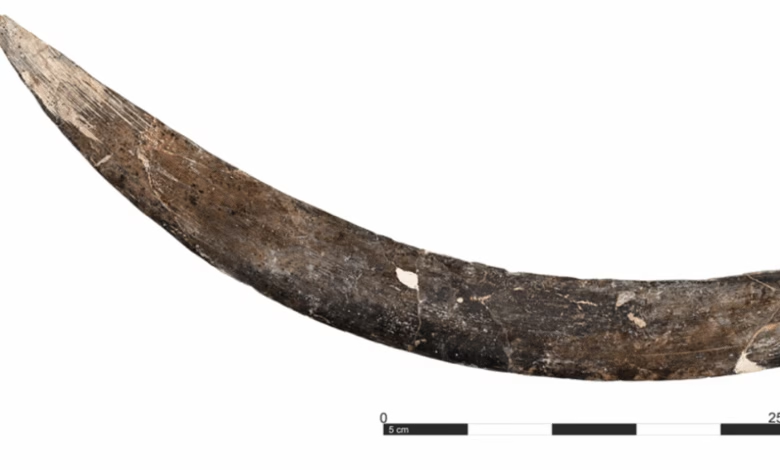
▼ Summary
– A mammoth-tusk boomerang found in Poland’s Oblazowa Cave may be around 40,000 years old, much older than the initial estimate of 18,000 years.
– The boomerang, discovered in the 1990s, is one of the world’s oldest intact boomerangs and offers insights into Ice Age life in Poland.
– Measuring 72 cm, the boomerang has wear marks from use, grooves from crafting, and grip-enhancing diagonal marks on one end.
– Tests with a replica show it flies smoothly but doesn’t return, resembling certain Aboriginal Australian boomerangs in design and function.
– The revised age comes from radiocarbon dating of nearby bones, suggesting the original sample was contaminated by modern carbon.
A remarkably preserved mammoth tusk boomerang discovered in Poland has stunned archaeologists with its revised age, potentially rewriting our understanding of Ice Age hunting tools. Recent radiocarbon analysis suggests this ancient artifact dates back approximately 40,000 years, far older than initial estimates of 18,000 years. The finding sheds new light on the ingenuity of early humans who thrived in the frigid landscapes of prehistoric Europe.
Measuring 72 centimeters long, the curved weapon displays meticulous craftsmanship. One end features subtle rounding, while diagonal grooves along its surface hint at careful shaping for better grip. Microscopic marks reveal both the mammoth’s natural wear and the toolmaker’s precise handiwork. Unlike returning boomerangs, tests with replicas confirm this design flew straight, ideal for hunting large game like reindeer or horses that roamed the region.
The discrepancy in dating emerged when researchers noticed inconsistencies between the boomerang’s original 1996 radiocarbon results and other artifacts from Oblazowa Cave. Suspecting contamination, a team led by University of Bologna scientist Sahra Talamo re-examined the site. By analyzing 14 additional samples, including animal bones and a human thumb bone from the same sediment layer, they concluded the boomerang belonged to a much earlier era.
What makes this discovery extraordinary isn’t just its age but its resemblance to non-returning boomerangs used by Indigenous Australians. Though separated by millennia and continents, the parallel designs suggest convergent innovation, humans independently crafting similar tools to meet shared survival needs. For archaeologists, the revised timeline opens fresh questions about how Ice Age communities adapted their technology to extreme environments.
The mammoth tusk boomerang now stands as one of the oldest known hunting weapons of its kind, offering a rare glimpse into the resourcefulness of our ancient ancestors. Its survival through millennia underscores the enduring legacy of early human craftsmanship in the face of Earth’s harshest climates.
(Source: Ars Technica)